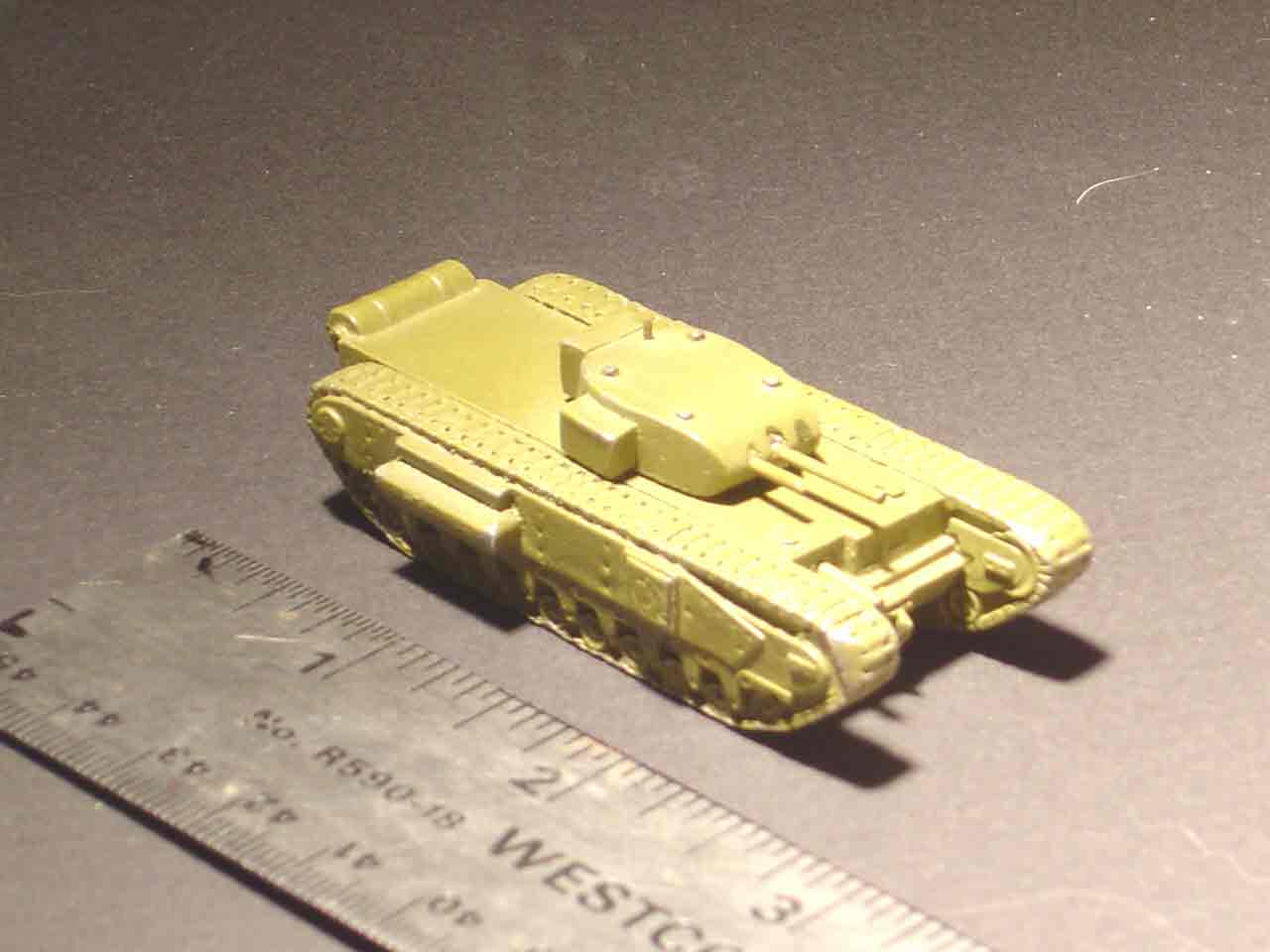As the ruler in the photograph reveals, the model is less than three inches long. This model was cast from molds similar to those that were used to cast recognition models for the United States Army during the Second World War.
--more--

After the end of the Second World War, student scale models of all the tanks that were used in U. S. Army recognition courses were mass produced for the civilian market by Comet Metal Products of Richmond Hill, Long Island, New York, USA, under the Authenticast brand name.
Tanks, armored cars, troop trucks and scout vehicles, all cast in metal in 1/108 scale, were sold to the general public. The range of models included tanks and other vehicles of the United States Army, the British Army, the Russian Army, the German Army and the Japanese Army.
Every vehicle was packed in a small cardboard box. The boxes, decorated in red, white and blue, were of a hinged flap-cover type. That is, the cover was part of the box, similar to boxes that contain raisins or breakfast cereal. Pictures of tanks appeared upon the box, but the pictures did not represent the model in the box. The only difference between the boxes were the names of the contents, which were stamped in black ink upon a small white rectangle on one side of the box.
"Do you still possess any of the original boxes for your collection of Authenticast tanks?" the Photographer asked the Collector as the two gentlemen were preparing for a photo-shooting session.
"Unfortunately, the answer to your question is no," replied the Collector.
"What became of the boxes?" queried the Photographer.
"To the best of my knowledge," the Collector replied, "all the individual boxes for my Authenticast tanks were discarded by my parents while I was serving in the Navy. They evidently removed all the models from the original boxes, then piled the models into old shoeboxes, and then discarded the original boxes."
"What do you suppose possessed them to perform this act, if indeed they did so?" asked the Photographer.
"I cannot say with certainty," replied the Collector, "but I believe that the space consumed by the original boxes, which were neatly stacked on closet shelves like bricks, was preempted for the storage of bedsheets and pillowcases."
"I extend to you my sincere sympathies," said the Photographer. "Nevertheless, had your parents not required the space on the closet shelves for their linens, we would not now be writing this thesis on the creation of new boxes for toys that have lost their original boxes."
"You are entirely correct," said the Collector.
"Also," he added, "one of the joys of collecting is the creation of attractive methods of storage. After all, the original boxes for the golden collections of good King Tut were never found by the archaeologists who unearthed his tomb."
Here the Collector was referring to the contents of the tomb of the Egyptian King Tutankhamen (originally Tutankhaten), who reigned from 1361 to 1352 B.C.
It is a sad fact that Mr. Howard Carter, who discovered the King's tomb in 1922, was unable to find a single original box that might have held any of the King's golden treasures.
"Do you suppose," pondered the Photographer, "that the King's parents might have discarded all the original boxes while the King was away at court?"
"Such an act, if eventually revealed by scholars of antiquities, would not surprise me one bit," replied the Collector. "After all, wealthy Egyptian families in those days possessed a great deal of linen, and there is only so much space upon a closet shelf, even for the mother and father of a great king."
Go to top of page